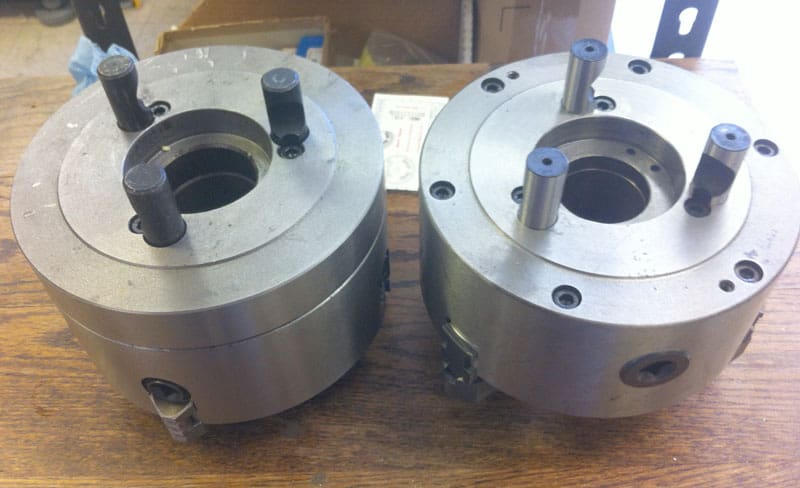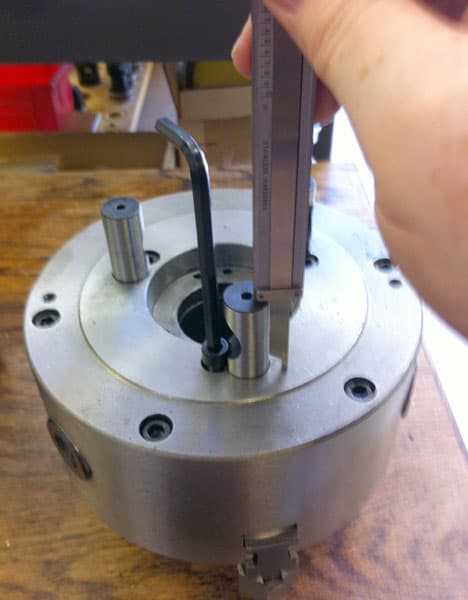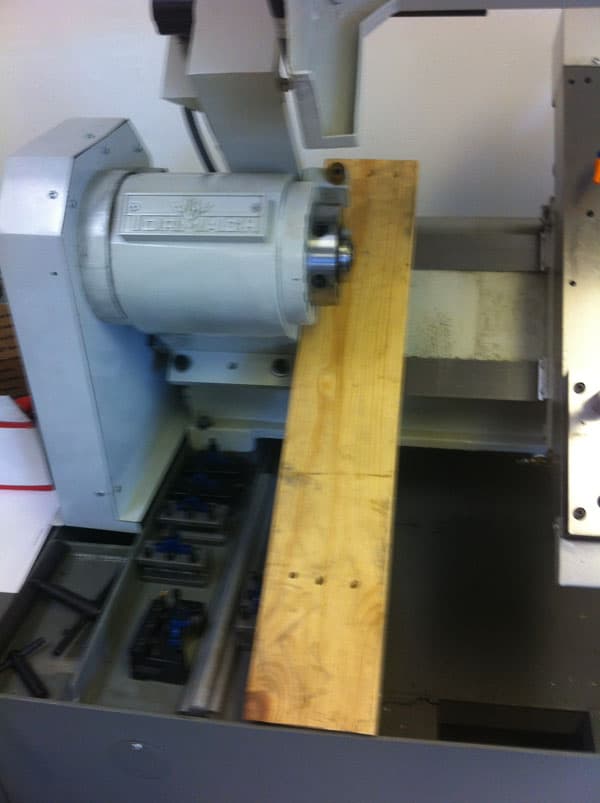I've finally just about finished setting up my Tormach lathe. One matter I wanted to discuss is how to set up new D1-4 chucks on a lathe. Specifically, it's about adjusting the cam locks located on the rear side of the chucks. Each chuck consists of 3 cam locks that align with corresponding holes in the spindle nose. Here are my chucks:

4-jaw on the left and 3 jaw on the right. The round posts have little cutouts that engage the cams in the spindle nose. These need to be adjusted to the proper height for best engagement...
If you've never set up a chuck like this, your reaction is probably to tighten down the cam locks as far as they'll go and then slap the chuck onto the spindle nose. Note that there is a socket head cap screw that engages a cutout on each cam lock to prevent it from spinning loose, so "as far as they'll go" would be the lowest position that will engage properly with the socket head cap screw. If you do that, you'll find the chucks don't fit properly to the spindle. In fact they may bind up and require some persuasion to get them back off.
The right way to do this involves a bit of measurement and some trial and error. First thing is to take some type of depth gage and get all 3 cam locks to the same height-I just used the depth gage feature on my digital calipers to do the job:

Set the height of each cam lock to be the same using a depth gage...
On my chucks, there could be as much as two turns of the cam lock on its threads difference between each one when setting their height, so it is important to actually measure and not just assume things will be the same based on the threads. This is not a function of there being different threads, but rather of the depths and exactly where the threads start.
Start by setting them all as deeply as you can get them to match up. Try the chuck on the spindle. If you haven't already, you'll want to use a punch to mark the "unlock" position of the locks. If things don't work pretty smoothly and easily, don't force it. Pull the chuck back off the lathe and back the cam locks out a turn so they raise up. You should notice things get easier when mounting the chuck and then they get harder again. Return to that "sweet spot" where they're easiest and you're good to go. I was able to get my chucks adjusted so they go on and off the spindle extremely easily and they are a pleasure to work with.
One more thing-put down some protection on your lathe ways in case you drop a chuck (DOH!):

It's a little harder on a slant bed lathe to use a piece of lumber to protect the ways from a dropped chuck. I found a nice long piece of wood could be wedge into place between the ways and the front of the coolant pan...
I haven't yet managed to drop a chuck (knock on that wood!), but that's probably because I always put down a piece of lumber to protect the ways. Mr Murphy realizes it's better to wait on dropping the chuck until there is no protection available.
I'll have another installment on the Tormach shortly that will cover my Swiss Multifix QCTP and tooling. I just need to finish up an ER collet chuck holder for twist drills and the like before posting.
Be the first to know about updates at CNC Cookbook
Join our newsletter to get updates on what's next at CNC Cookbook.